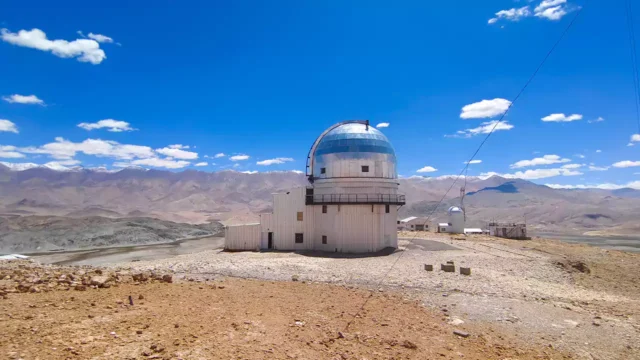Srinagar, July 18: In a landmark achievement for Indian astronomy, scientists operating the high-altitude observatories of Hanle, Ladakh, have successfully photographed the interstellar comet C/2025 N1 (ATLAS), also known as 3I/ATLAS, as it races through the Solar System.
The comet, officially confirmed on July 1, 2025, by the Asteroid Terrestrial Impact Last Alert System (ATLAS) telescope in Chile, has quickly become a focal point for the global astronomical community.
India’s Hanle Observatory Captures Rare Interstellar Comet in Historic Observation
Unlike earlier comets, C/2025 N1 (ATLAS) stands out with its massive size, high speed, and a glowing coma—an outer cloud of dust and gas—suggesting it is a true comet, possibly over 7 billion years old and rich in ancient organic material.
India’s Hanle Observatory in Ladakh played a crucial role in tracking this celestial visitor. With its high-altitude location and advanced optical equipment, Indian scientists joined a global campaign to study the comet as it brightens on its approach to the Sun. The closest point—known as perihelion—is expected around October 29, at a distance of 1.4 AU (astronomical units).
The comet’s hyperbolic orbit and exceptional velocity strongly suggest that it originated outside our Solar System. According to astronomers, its trajectory and energy cannot be explained by the Sun’s gravity alone.
India’s contribution, especially from Hanle, adds valuable data to global efforts in decoding the origins of such rare interstellar objects—shedding light on the early history of our galaxy.








